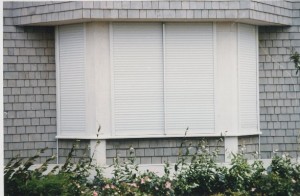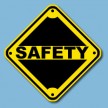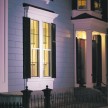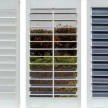Hurricane Shutters and Storm Panels
How to Protect Your Home From A Hurricane
What should I do to protect my home from a hurricane? I live in-land 35 miles from the Atlantic coast.
Thanks, A.D.
Dear A.D.,
Unless you’re set for a direct hit I would take normal precautions of removing or securing items that can cause damage if carried by strong winds.
Things like lawn chairs, umbrellas, trash cans, etc. Anything that the wind can lift up and blow through you windows.
If your house was built recently and meets or exceed current model building codes’ high-wind provisions it will have a much better chance of surviving violent windstorms.
If you live on the coast, are in the direct path of the hurricane you can improve the odds of your house surviving high wind damage by taking precautions.
of the hurricane you can improve the odds of your house surviving high wind damage by taking precautions.
1. Install ¾” exterior grade or marine grade plywood to all windows and glass doors.
Use 2 1/’” or 3” screws every 18” apart on all sides. Protecting doors and windows is one of the most important things you can do. Why? Once a window is broken by flying debris, wind can cause upward pressure on the roof, which can sometimes tear it right off. If you live in an area frequented by hurricanes you should have the plywood labeled and cut for each window. These plywood covers should be pre-drilled for the screws and stored with the screws needed to install them. Make sure that you have the correct size ladders to reach your windows, and have someone able and fit install them, especially if it’s windy outside. Carrying plywood in the wind, on a ladder, can be a recipe for disaster.
2. Remove dead trees or tree limbs on your property, and away from your house.
3. Know whether your home is in a zone that could be flooded by storm surge, and where to go if you have to leave.
4. Have a family plan.
How will family members meet up? Contact each other? Which number should they call? [maybe an out of state relative]
5. Have a “grab and run” bag.
This bag should be ready with important papers, such as your home owners insurance policy, and prescription drugs.
6. Have an emergency survival kit ready
This emergency kit should have nonperishable food, water, a first aid kit, cash, battery-powered radio, clothing, glasses, sleeping bags, baby supplies, basic tools, and other items of immediate need. A three day supply is a good start.
Considerations When Remodeling:
1. Install impact resistant widows.
2. New Doors:
Install door frames securely to the frame, ensure that your doors have a minimum of three hinges and multi point lock or at least a 1” long deadbolt.
3. Install permanent storm shutters or hurricane shutters;
Storm shutters close over window or door openings to prevent wind driven debris from breaking glass. They can be simple ¾” plywood slabs that you make yourself or corrugated steel panels that roll down and lock in place. these units can be electrically and manually lowered by a band pull or crank.
Storm panels are usually made out of linked metal. Some styles have track and rails that are permanently attached to the sides of doors and windows and roll up and store in an enclosed box when not in use. You see this a lot on the coast. A second style uses a c-shaped track system that is permanently installed at the top and bottom of the window and must be manually aligned.
4. Garage doors:
Many garage doors can easily be torn off by high winds. Have a qualified installer check the track system and connections to ensure your door can withstand high winds. Sometimes stiffeners can be added to older doors to secure them better. Or install a new storm resistant garage door.
5. Roofing:
Install shingles that will resist high winds and have your installer fasten these shingles according to the specifications for high wind fastening. Do Not overlay shingles, strip to the roof sheathing and then install your new shingles.



















